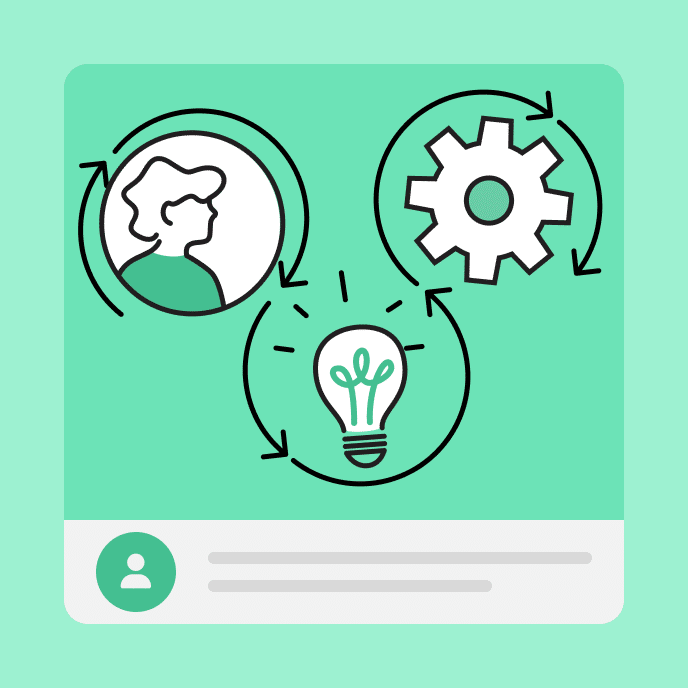2025 E-Learning Trends: What’s In and What’s Out
Dive into the top e-learning trends of 2025! From personalized learning to generative AI, cutting-edge tech tools are changing the way we learn online.

Looking ahead to the future of e-learning
The world of e-learning is evolving faster than ever, and 2025 is poised to be a game-changing year. As technology advances and learner expectations shift, some trends are set to shine brightly while others fade into the past. Whether you’re a teacher, instructional designer, or e-learning professional, staying ahead of trends is key to delivering impactful and engaging learning experiences.
From AI-powered personalized learning to interactive, immersive experiences, the future of education is anything but static. In this post, we’ll dive into what’s in and out and how these changes will transform how we learn, teach, and grow.
Key Takeaways
10 e-learning trends shaping 2025

With advancements in technology and shifting learner expectations, the digital classroom of tomorrow will be far different from what we know today. From immersive AI-driven experiences to personalized learning paths, let’s dive into the trends that will shape the future of education and how they’ll revolutionize how we learn, teach, and connect.
1. AI-generated content and personalization
With the rise of artificial intelligence and adaptive learning technologies, learners are increasingly expecting content that adapts to their needs, preferences, and learning speeds. Personalized learning paths have been a buzzword for several years, but they’re poised to become a mainstream standard in 2025.
Additionally, AI-generated content, chatbots, and virtual tutors will make diverse assets more efficient and offer more supportive and interactive learning experiences. Powerful AI assistants can generate course content up to 9x faster, building from source material or by prompt.
2. Microlearning for maximum impact
Time-constrained employees seek flexible, bite-sized learning experiences that fit their busy schedules. Enter microlearning: short, focused learning modules designed to deliver key information in an easy-to-digest way. Whether it’s a quick video, an interactive quiz, or a brief simulation, microlearning will be a key way to learn and teach in 2025.
3. Immersive learning
Virtual reality (VR) and augmented reality (AR) are no longer just for gamers or the entertainment industry. In 2025, immersive learning technologies will gain traction in settings like corporate training environments, offering employees hands-on, experiential learning opportunities that are impossible to replicate through traditional methods.
Training modules that utilize immersive 360° images with hotspots for click-and-reveal information are already in use. The next step—fully embracing complete virtual environments—is not far behind. Whether simulating a medical procedure, conducting virtual site tours, or practicing soft skills in a lifelike scenario, VR and AR will provide a safe space for learning by doing.
4. Social learning through collaboration
Social learning harnesses the power of peer interactions, discussion groups, and collaborative projects to reinforce key lessons, encourage active participation, and build emotional intelligence. This phenomenon will be key to fostering cooperation and knowledge-sharing as workplaces become more interconnected.
In 2025, the learning process won’t just happen in isolation—employees will learn from each other through social platforms, forums, and collaborative tools.
5. Learning analytics
Learning is not a “one-and-done” event—it’s a continuous process that can be enhanced by tracking and analyzing progress. In 2025, data-driven learning analytics will become the backbone of successful training programs. By collecting insights into how employees interact with content, where they struggle, and where they excel, businesses can refine their learning strategies to deliver more effective, targeted training and continuous learning.
6. Gamification
Points, badges, leaderboards, and rewards—just like VR and AR, they’re not just for gamers anymore. Gamification uses game-like elements in e-learning to encourage participation and boost engagement by making learning competitive.
Even compliance training—known for dense, complex material—can be gamified into daily or weekly quizzes. Imagine departments going head to head with a leaderboard showing completion rates, badges earned, and top performers. In 2025, gamification will boost organizational productivity and engagement in training programs worldwide.
7. Mobile learning
With 80% of the workforce consisting of deskless workers—those frontline employees always on-the-go—mobile learning is more important than ever. Delivering engaging learning content to employees wherever they are facilitates just-in-time learning. In 2025, e-learning modules adaptable to any device or screen—desktop, laptop, tablet, or phone—will become the norm across the board.
Mobile learning delivers knowledge exactly when it’s needed, whether for the new hire brushing up on office hierarchy before their first big all-hands meeting, the sales rep brushing up on product knowledge before meeting a client, or the retail associate reviewing the SOP for returns after the holidays.
8. Adaptive learning
Adaptive learning systems use advanced learner progress tracking to adjust learner pathways, materials, and content in real time. Learners are presented with opportunities to revisit concepts they didn’t score well on with additional resources and tailored activities to promote engagement and retention.
In 2025, adaptive learning systems will guide students and employees alike through vibrant, dynamic learning environments. Rather than repeating the same learning module over and over, learning will be personalized to the learner’s unique preferences, needs, and abilities to achieve mastery.
9. Multimodal learning
In 2025, learners won’t have to learn through a single, monotonous delivery method, but through many—short videos, bite-sized podcasts, microlearning modules, gamified mobile learning, and more. Multimodal learning introduces the concept of varying course formats for the same content, giving learners a better chance to build comprehension.
While an employee might not understand on-the-job application after listening to a single podcast on soft skills, it might just click on the next go around when the same content is delivered through an interactive checklist activity.
10. Spaced repetition
Increasing knowledge retention—and combatting the forgetting curve—is the goal of any learning and development professional, educator, or instructional designer. Spaced repetition introduces a method of learning that has learners review content at increasing intervals over time.
For example, after finishing an initial onboarding training program, learners will take scheduled review sessions one day, three days, one week, one month, and three months later. This works with how we naturally form long-term memory, and works more efficiently than “cramming” techniques or constant review.
Say goodbye to these 5 e-learning trends
While innovation continues to drive the digital education space, some practices and tools will lose traction. The next wave of e-learning will be about personalization, interactivity, and seamless integration with real-world skills. Let’s look at the trends that won’t cut in 2025.
1. Passive learning
Traditional e-learning formats, where learners passively read text without engaging with the content, will decline in 2025. The shift toward more active, learner-centered experiences will continue, focusing on interactive content, gamification, and hands-on activities that promote more profound engagement. Learners want to be active participants in their education, not just passive information consumers.
2. Lack of mobile accessibility
As mobile devices are used more and more in everything from messaging to training, e-learning content that is not mobile-friendly will quickly fall out of favor. Learners expect to be able to access content anytime, anywhere, whether on a smartphone, tablet, or laptop. Content that doesn’t adjust well to different screen sizes will fail to meet user expectations for mobile learning.
3. One-size-fits-all learning
In the past, many e-learning programs were built with a “one-size-fits-all” approach, offering the same content to all learners regardless of their backgrounds, skills, or interests. In 2025, this approach will no longer meet the diverse needs of learners. More personalized, adaptive learning will take center stage, moving away from cookie-cutter courses that fail to engage or address individual needs.
4. Text-heavy content
Gone are the days of long, text-heavy modules that overwhelm learners with too much reading. In 2025, dynamic visual and interactive content will take priority. Learners expect multimedia experiences, such as videos, infographics, and interactive simulations, that help them engage in online learning more effectively.
5. Limited LMS platforms
Traditional learning management systems (LMS) that offer limited interactivity and are difficult to navigate will be phased out in favor of more flexible, user-friendly platforms. Moving forward, the most powerful LMSs will integrate with various tools and systems. This will allow instructors to create a seamless learning experience that includes quizzes and social learning features.
What do these changes mean for you?
The e-learning trends of 2025 will reshape the landscape for learning. The result? More efficient, dynamic, and impactful learning experiences that drive real-world results. Let’s examine the significant changes for learners, instructional designers, and businesses.
- Learners: With new technological advances, learners will experience more personalized, flexible, and engaging experiences tailored to their individual needs and learning styles.
- Course creators and instructional designers: As technology changes, instructional designers and other course creators will be challenged to learn new skills in technologies like AI, immersive simulations, and adaptive learning platforms to craft dynamic, learner-centric content.
- Businesses: Companies must shift toward more agile scalable training solutions that drive measurable performance and equip employees with skills for the future to stay ahead of the curve.
The future of e-learning starts now
The e-learning landscape of 2025 is set to transform how we engage with learning, pushing boundaries with innovation and personalized experiences. As some trends phase out, exciting new opportunities will emerge, offering businesses, instructional designers, and learners a chance to evolve.
Are you ready to lead the charge? Now is the time to rethink your training strategies, embrace the latest technologies, and prepare for the future of learning.
Wondering what’s new with us? Check out our latest releases today!
You may also like

6 Microlearning Ideas to Train CS Agents and Boost CSAT
Learn how to implement microlearning strategies that improve knowledge retention to improve agent readiness, increase CSAT scores, and accelerate time to productivity.

